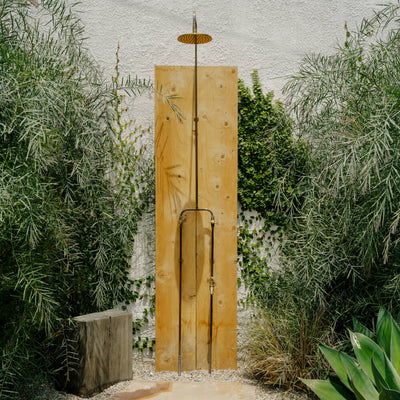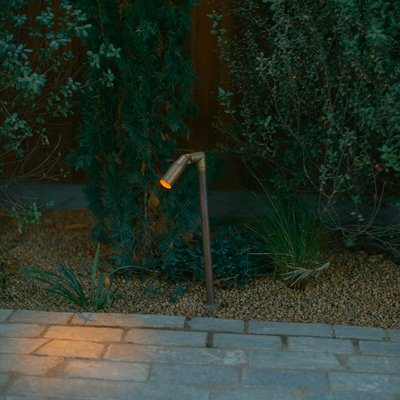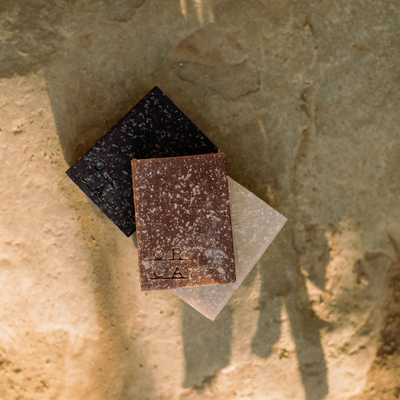Plants +
People
A study of the symbiotic relationship between
humans and the gardens they tend to.
We are pleased to introduce a special edition of Plants + People conversations—each captured last autumn while traveling across Japan, and featuring a trio of individuals who uniquely embody the tenets of Japanese gardening in practice and philosophy.

seijun nishihata
011 seijun nishihata, plant hunter
region: osaka
plant community: podocarpaceae, oleaceae, araliaceae, asparagaceae
photography: justin chung

For Seijun Nishihata, it has always been about plants & people. Born into a family of plant wholesalers, there was never a division between outside and in, rather considering both existing in overlap, like “one continuous garden.” Today, Seijun is a self-titled “plant hunter” and landscape designer working as SORA BOTANICAL GARDEN Project, a horticultural studio known for directing its deep expertise of rare plants into the creation of international experiential landscapes.
From SORA's mountaintop Osaka farm, Seijun cultivates over 1,000 plant varietals across five greenhouses and four acres — all for the purpose of inviting curiosity and beauty into our experiences. Read on for a conversation with Seijun on the language of nature; embracing the eternal work in progress; and how a chance encounter with a carnivorous plant rekindled an obsession with the possibilities of plant life.

What is your first or earliest memory of being in a garden?
I was born into a family of plant wholesalers that have been in business for 150 years. There was no border between a private home and a workshop, living in the workshop full of plants and flowers. Every time I opened the door to my home it would feel like one continuous garden.
Can you share more about your relationship to planning and preparing your garden throughout the year?
One of the most important things to consider is that Japan has four distinct seasons. As a person whose life's work is plants, I am always conscious of the seasons ahead. For example, when it's winter, I'm already thinking of spring and summer and will start working toward those seasons.

- Seijun Nishihata

pinus thunbergii
(japanese black pine)
Pinus thunbergii or Japanese black pine is a pine tree native to coastal areas of Japan. Black pines can reach 130 feet high. The bark is gray on young trees with small branches, changing to black and plated on larger branches with the trunk becoming thick on older trunks.

I have numerous friends in Japan who've inherited longstanding and traditional family businesses. From experience, it's evident that no one should try to protect tradition too much, but instead recognize that updating and embracing new challenges are crucial for traditional preservation. I resonate with this perspective, and despite my roots in the plant genre, I actively pursue innovative ventures to ensure a dynamic and evolving legacy.
What does it mean to you to feel "planted"?
In Western thought, there is a concept that nature is ‘other’ than us. There is a great contrast between this and Eastern thought—especially the idea that comes from traditional Japanese animism—that `I am a part of nature.' I feel that the word "planted" is very unique and has a nuanced meaning that is in between these two ways of thinking. The plants that I and other people have planted are not only 'other,' but also the result of our own actions. In that sense, I think "planted" is a symbolic word that mixes nature and human action.
What are some of your favorite cultivars to work with?
I work with a wide variety of plants, but the ones I love the most are original species.

cycas revoluta
(japanese sago palm)
Cycas revoluta, commonly known as the Japanese Sago palm, is a slow-growing cycad native to Japan. Characterized by its feathery, dark green fronds and a stout, cylindrical trunk, it is a popular ornamental plant in gardens and interiorscapes. Despite its name, the Sago palm is not a true palm but rather belongs to the ancient group of cycads.

- Seijun Nishihata

cereus peruvianus
(peruvian apple)
Cereus peruvianus, commonly known as the Peruvian apple cactus, is a columnar cactus species native to South America, particularly Peru. It features branching arms and large, fragrant, nocturnal flowers that attract pollinators. Cultivated for ornamental purposes, this cactus also produces edible fruits with an apple-like appearance, adding to its appeal in gardens and landscapes.

What does your planning process look like? Where or how do you typically start in your creative process?
I always start from the research phase, then concept work, schematic design, detail design, and my original work phase "plant hunting."
The first phase involves researching the history, topography, and environment of the site. This is very important. Most landscape designers start with a design first, but I start by getting to know the environment.
Depending on the location or project, I usually make a 3D map of the terrain, and look at it from various angles before I start concept work and planning. Of course, going to the site on foot and getting a feel for the place, is the most important part of this process.
Once I grasp the current situation and condition of the site, I start thinking about concepts: How the site should be, direction, mood, volume, zoning plan, and so on.
I suppose I have traveled all over the world more than most landscape designers: The inspiration, ideas, and photos I get from traveling are installed in my head like a dictionary or encyclopedia. Sometimes I use them for my landscape design, as a presentation material, to make mood boards or image references to clients.
The decision on what kinds of trees should be included are made in the schematic design stage. Sometimes I need to decide on every single plant. I go hunting trees to research, consider what would be best, while keeping in mind the environment and the direction of the project. Sometimes I select them from my farm, which is why I always have over 1,000 types in stock at all times. I am not only a desk designer, but a hybrid of real nurseryman and plant hunter.
After completing the plan, I will make the estimate for the construction work, then complete the full presentation contents.

ceiba insignis
(white floss-silk tree)
Ceiba insignis, or the white floss-silk tree, is a species of flowering plant in the family Malvaceae. This deciduous tree has a swollen, thorny trunk and spreading branches. It normally grows to about 30 feet in height with an equal width, although older trees can grow taller.


On the opposite end, how do you fully realize a vision when working with something so alive and in flux; how do you consider a garden "complete"?
In my opinion, when creating a forest or a garden, there is no such thing as complete.A garden is always a process.
I have been commissioned to carry out landscaping works and then handed over the gardens. However,those are still not complete. I believe that won't be completed after one year; even after 10 or 100 years, they will still be in process.
Nature and gardens are constantly changing, and there is nothing on earth that remains unchanged. Whether it's long or short term, it's always changing. It's the same with gardens. When dealing with living things, I've never pursued perfection.

ficus microcarpa
(chinese banyan)
Ficus microcarpa, commonly known as the Chinese banyan, is an evergreen tree that belongs to the fig family. Native to South and East Asia, it is characterized by its glossy, elliptic leaves and aerial roots, which often develop into a network of trunks and branches. Widely used as an ornamental tree, Ficus microcarpa is also popular as a bonsai specimen.

acer palmatum
(japanese maple)
Acer palmatum, commonly known as the Japanese maple, is a deciduous tree known for its deeply lobed leaves and vibrant autumn foliage. Native to East Asia, this ornamental tree comes in various cultivars with diverse leaf shapes and colors. Generally, this tree ranges from 6 to 25 feet in height


What formal principles of arrangement or design do you follow, if any?
I don't follow any principles. Nature has all the answers.
How can we each increase our garden literacy?
I intentionally face challenges in encouraging others to enhance their knowledge of gardening. For example, the moment when I became aware of plant literacy and the moment when plants were planted in my heart was not due to someone's education or guidance, but through experience.
For the first 21 years of my life, I had little interest in plants. However, everything changed when I encountered the world's largest carnivorous plant while climbing a mountain in Borneo. This experience sparked a newfound fascination with nature. Through this realization, I've come to believe that the most impactful method of enhancing people's plant literacy is through spontaneous, awakening natural experiences, rather than intentionally accumulating knowledge over time.
Therefore, SORA BOTANICAL GARDEN Project's mission is not to create a garden or decorate an event space.These represent merely the methods and the ultimate goal is to provide someone with an experience about nature that will be of lifelong value. That's why I think SORA BOTANICAL GARDEN Project does not 'educate people,' but rather we naturally ‘plant plants in people's hearts.' I am encouraging others to experience exactly what I experienced.
beaucarnea recurvata
(ponytail palm)
Beaucarnea recurvata, the elephant's foot or ponytail palm, is a species of flowering plant in the family Asparagaceae. It is an evergreen perennial growing to 15 feet 6 inches with a noticeable expanded stem, for storing water. The single palm-like stem produces tufts of strap-shaped, recurved leathery leaves.

brachychiton rupestris
(queensland bottle tree)
Brachychiton rupestris, commonly known as Queensland bottle tree, is a tree in the family Malvaceae. Reaching around 30–80 feet high, this tree is deciduous, losing its leaves seasonally, between September and December.


What garden in the world is your favorite?
The Garden of Ginkaku-ji Temple (The Silver-Pavilion).
Temples, in general, have experienced significant cultural development—often serving as venues to showcase power for political, missionary, or religious purposes. However, the garden of Ginkaku-ji Temple stands apart as it does not serve the typical role of a propaganda garden. From a theoretical perspective in Japanese history, this aspect is particularly intriguing to me.
From another point of view, the garden has a purity and an old-fashioned feel, but I can find very modern messages in it. There are unique objects called Kogetsudai (Moon Viewing Sand Mound) and Ginsyadan (Silver Sand Sea) that look like modern sculptures added by someone else in later generations. To me it's like the artwork of Anish Kapoor or Takashi Murakami in the Palace of Versailles.
Additionally, the impressive hedge at the entrance of the Temple looks exactly the same as Western garden pruning. There are even elements that express the pleasure of controlling nature completely by human hands, which is completely opposite to the concept of a Japanese traditional garden.
I believe that Ginkaku-ji Temple has become a Japanese icon today because of its fearless preservation and updating. It is quite an innovative garden.

podocarpus macrophyllus var. maki
(yew plum pine)
Podocarpus macrophyllus is a conifer in the genus Podocarpus, family Podocarpaceae. It is the northernmost species of the genus, native to southern Japan and southern and eastern China. It is a small to medium-sized evergreen tree, reaching close to 70 feet tall.

acer palmatum 'kiyo hime'
(japanese maple 'kiyo hime')
Acer palmatum 'Kiyo hime' is a dwarf Japanese maple cultivar known for its compact size and delicate, finely dissected leaves. This slow-growing deciduous shrub typically forms a low, mounding habit, making it suitable for small gardens or container planting. 'Kiyo hime' often displays vibrant green foliage that turns golden-yellow in the fall.


Beyond plants, what are other parts of the garden that you like to use to tell the larger story?
Depending on the concept, Landscapes can be divided into hardscapes and softscapes for garden areas. In Hardscape, I build rivers, ponds, and pools if needed. Keeping the project's concept and policy in mind, I prepare the Hardscape and carry out construction work that is both functional and aesthetically pleasing.
Describe some of your favorite sensorial details amid a garden.
The sensorial details of the garden change each time depending on the site and project concept, so there are no set rules. There is no element that I absolutely intend to include every time, and I deal with it flexibly.

pereskia nemorosa
(rose cactus)
Pereskia corrugata, commonly known as rose cactus, is a unique species of cactus characterized by its distinctively large, flat, and corrugated leaves. Unlike typical cacti, it features foliage resembling those of traditional leafy plants. Native to Central and South America.

schefflera arboricola
(dwarf schefflera)
There are several types of Schefflera, including the common Schefflera arboricola, also known as dwarf umbrella tree. This tropical plant is native to Southeast Asia and Australia. Scheffleras prefer bright, indirect sunlight but larger varieties can tolerate dappled direct sunlight.

olea europaea
(olive ‘Nevadillo Blanco’)
This small growing evergreen tree has leather-like leaves which are green with silver undersides. Its fruit is oval and pointed in shape and dark in color. The Olea europaea Nevadillo Blanco produces a heavy crop of oil rich fruit used for making oil.










